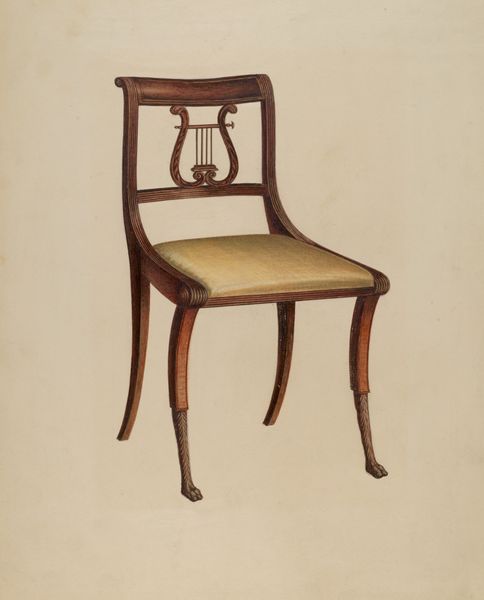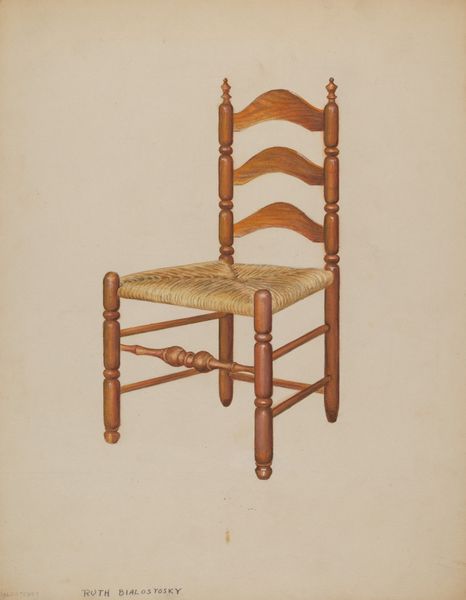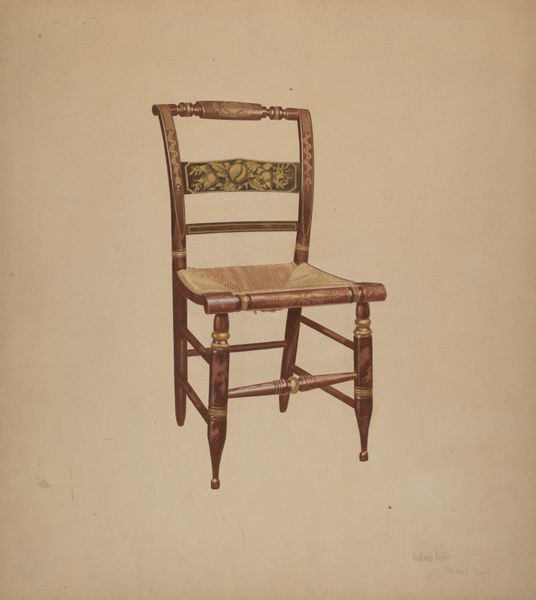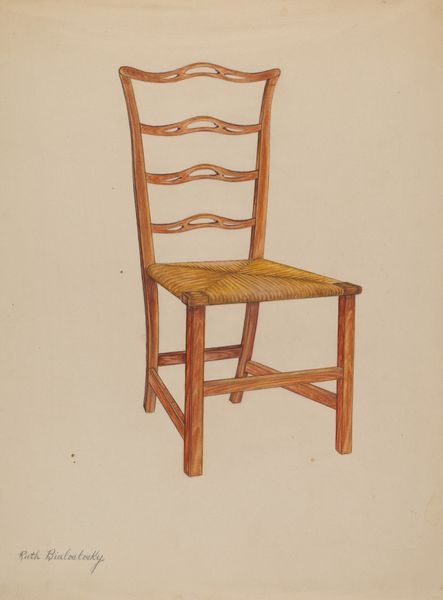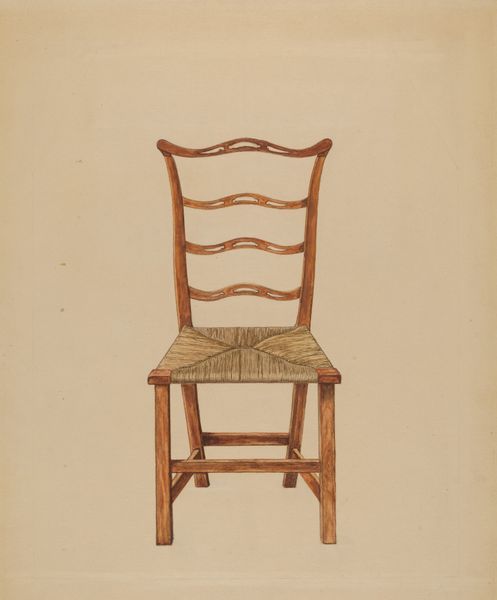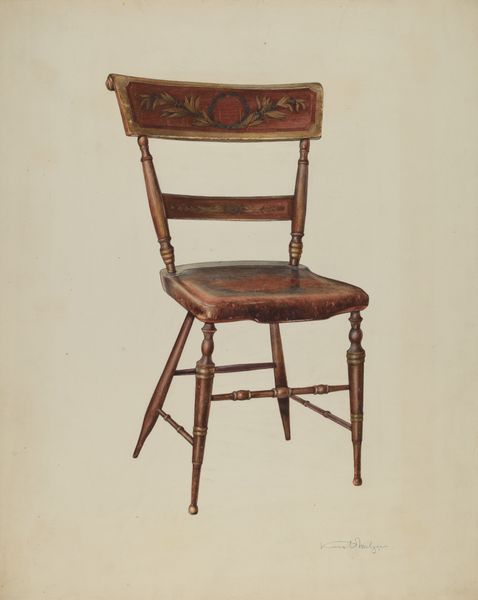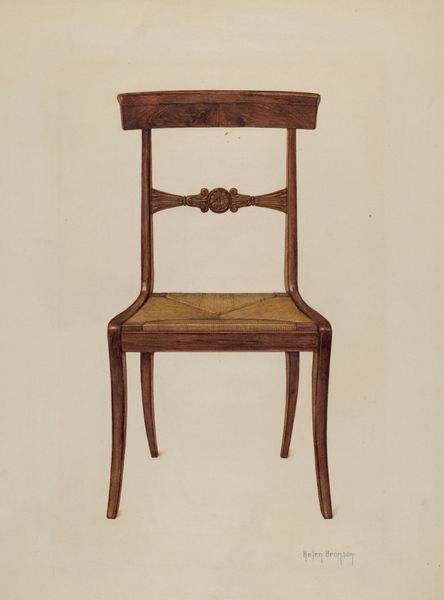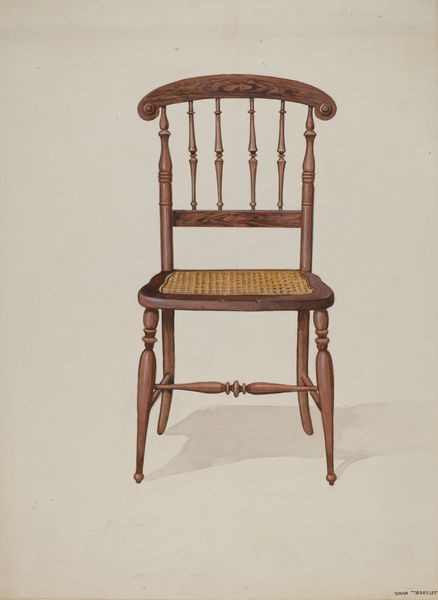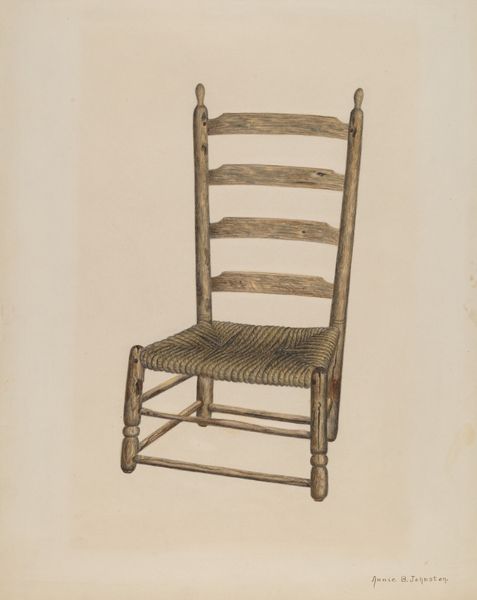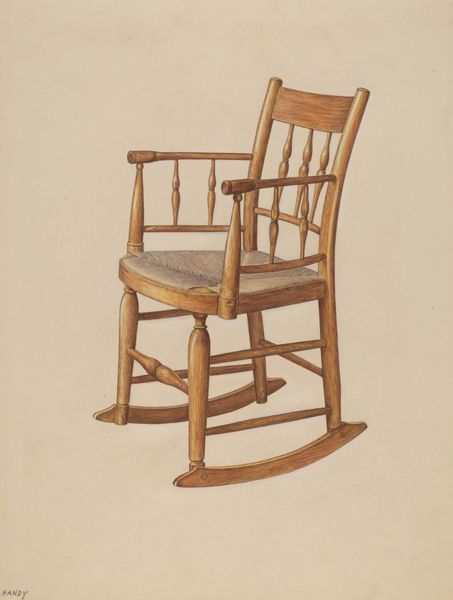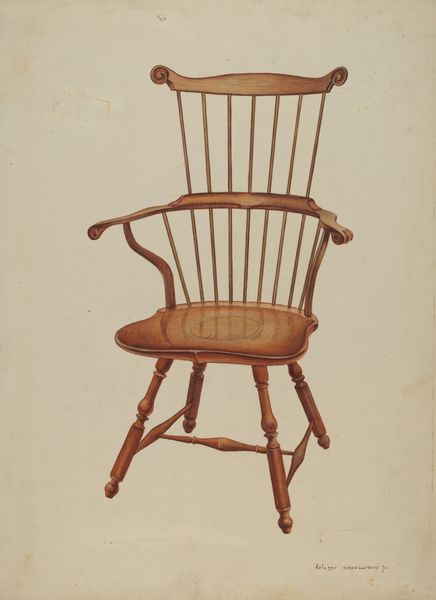
Dimensions: overall: 35.7 x 27.3 cm (14 1/16 x 10 3/4 in.) Original IAD Object: 37 1/2-36 1/2" high; 16"wide
Copyright: National Gallery of Art: CC0 1.0
Curator: This watercolor and drawing from circa 1936 is called "Chair - with Hudson River Scenes" and is by Ella Josephine Sterling. I am immediately intrigued by this! It is almost diagrammatic. Editor: It strikes me as surprisingly tranquil, almost meditative. The palette is quite muted, creating this calm sense of longing or reflection, yet is charged with political history of class. Curator: Precisely! I see this as an excellent intersection between labor and leisure, highlighting the materials and method of constructing and designing domestic life. The rendering of this common furniture invites one to think about production. We consider the physical processes involved in manufacturing everyday commodities like this chair. Editor: And the Hudson River School landscape painted on its back panel then reinforces a sense of identity connected to land, heritage, and romantic idealism… especially because there is a tension from a more material understanding and who could access that kind of ideal! Curator: Exactly! By combining the scene with an item for home furnishing, Sterling collapses assumptions about who should access 'high' art and on what surface they may be authorized to display their access. And that's particularly intriguing here: who even gets to have the time for "reflection" while seated. It certainly is an invitation into decorative art production. Editor: This work also invites us to consider broader issues of representation and social inequality, it raises questions about whose perspectives are valorized and whose are marginalized, within this romantic representation and also larger art discourse, right? And what narratives do we inherit through these objects? Who made the chair? Curator: The visual conflation allows for a closer inspection of labor conditions, class, and access to nature, challenging those narratives as being simply aesthetic! We can no longer enjoy a passive seat after this illustration. Editor: True! The watercolor illustration compels a different kind of attentiveness. Thank you for these details. It makes the scene that much more alive. Curator: Of course. It is just such a delicate reminder of art's relationship to production, materiality, and labor, rather than merely to romantic idealism.
Comments
No comments
Be the first to comment and join the conversation on the ultimate creative platform.
